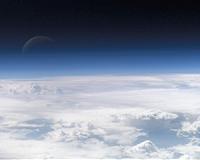| . |  |
. |
Toronto ON (SPX) Mar 29, 2011 With birds chirping and temperatures warming , spring is finally in the air. But for University of Toronto Scarborough (UTSC) environmental chemist Torsten Meyer, springtime has a dark side. "During the winter months, contaminants accumulate in the snow," says Meyer, an expert on snow-bound organic contaminants and a post-doctoral fellow at UTSC. "When the snow melts, these chemicals are released into the environment at high concentrations." In a specially designed, temperature-controlled laboratory at UTSC-which includes a homemade snow-gun and a chemical pump-Meyer creates large baths of fresh snow already tainted with organic contaminants. This one-of-a-kind set-up enables the researcher to slowly melt his "dirty" snow, collect the melt-water and track which chemicals emerge from the snowpack and when. Meyer's research reveals a worrying surprise. "One of the main findings is that there is a peak contaminant flush at the very beginning of the melt," he says. With the advent of spring, according to Meyer, comes a deluge of pollution. By the time snow has turned black with muck and grime, many harmful chemicals - including those from pesticides, car exhaust, telecommunications wiring insulation, water repellent clothing, paints or coatings - may have already seeped out of the snow and into the surrounding ground water or surface water. Although Meyer views his work as fundamental research, his findings have obvious real-world implications, such as how municipalities choose their snow dump sites. According to Meyer, cities and towns should be very careful to select well-contained sites to protect against that early flush of pollutants. Meyer's research is unique because previous studies on snowmelt contaminants have all used either natural snow or very low volumes of artificially produced snow. He is also one of only a handful of researchers in the world who study snow and organic contaminants. "Getting quantitative information on the flush of contaminants from a melting snowpack is particularly important," says Professor Frank Wania, head of Meyer's research cluster at UTSC. "The melt often coincides with time periods when many aquatic organisms are at a vulnerable stage of their life cycle."
Share This Article With Planet Earth
Related Links - The Air We Breathe at TerraDaily.com
 Where the winds blow: Experts ponder fallout risks
Where the winds blow: Experts ponder fallout risksParis (AFP) March 15, 2011 Experts monitoring weather patterns for any fallout from Japan's stricken nuclear plant said Tuesday the winds had so far been favourable but they were less confident about the outlook later this week. The World Meteorological Organisation (WMO) said winds on Saturday and Monday - when two blasts occurred at Fukushima - were blowing to the northeast and east, in other words out over the Pa ... read more |
|
| The content herein, unless otherwise known to be public domain, are Copyright 1995-2010 - SpaceDaily. AFP and UPI Wire Stories are copyright Agence France-Presse and United Press International. ESA Portal Reports are copyright European Space Agency. All NASA sourced material is public domain. Additional copyrights may apply in whole or part to other bona fide parties. Advertising does not imply endorsement,agreement or approval of any opinions, statements or information provided by SpaceDaily on any Web page published or hosted by SpaceDaily. Privacy Statement |